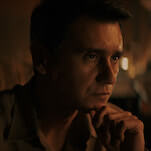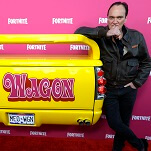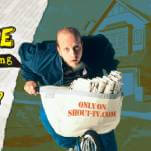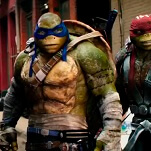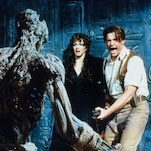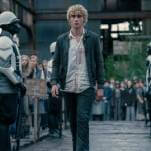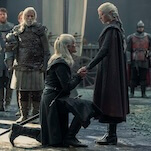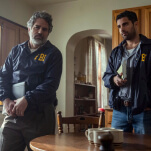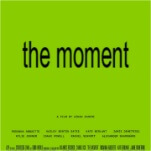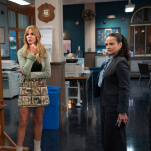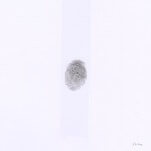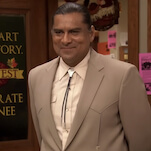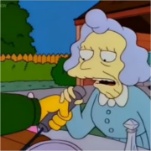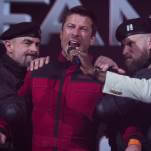Nice try, Marvel, but Vote Loki cuts too close to this election to be much fun
In 2008 DC Comics released a series called DCU: Decisions that promised to reveal the true political affiliations of all your favorite superheroes. Co-written by ideological opposites Bill Willingham and Judd Winick, it was as awful as the description sounds—Power Girl as a law-and-order Republican never seemed to fit, and that was typical of the book’s random attribution of political affiliations. That same year Marvel launched its Dark Reign event, a storyline that began with the premise that a murderous supervillain managed to take over the country with a well-timed PR coup. To say the story stood athwart the political winds of the time would be an understatement. And don’t forget “Superman’s Mission For President Kennedy”—originally slated to be published in December of 1963, before finally seeing print the following summer.
Comic books and electoral politics rarely work together, in other words, and this terrible tradition continues in Vote Loki #4 (Marvel). It would be difficult to blame the creative team of Christopher Hastings and Langdon Foss for the problems with this book—namely, that it exists at all, a lighthearted political tie-in Loki vehicle set in the middle of a political contest that is anything but lighthearted, and which becomes increasingly desperate with each passing day. The book arrives three weeks out from Election Day with a sickly wet thud. No one’s having fun with politics right now.
The premise of the Vote Loki series may seem familiar. A political parvenu with dubious credentials and no concrete policies swings huge swaths of the electorate by telling them exactly what they want to hear, which every supporter interprets to bolster their own prejudices. He tells his supporters straight away, “I’m going to lie to you right to your face and you’re gonna love it.” It’s up to Thor and Angela, along with the power of the press, to expose Loki as a dangerous supervillain bent on world domination. But the whole national political campaign was apparently a plan to launch a friend of Loki’s in a career as a political reporter? Remember, this is the kinder, gentler Loki of the past few years, bent toward the goal of redemption if still constitutionally unable to use any but the most duplicitous means to achieve even noble goals.
It’s likely that the series was conceived and planned long before the first ballot was cast in the first primary, when the idea that the 2016 election would unfold under more or less normal circumstances was still a probability. But for the last issue of this series to see print at this particular moment is regrettable. This is, again, no slight on the creative team. Hastings’ script explores the awkward concept with a fair amount of wit, making a good-faith effort to use Loki’s shiftlessness and opportunism as a commentary on the malleability of the American electorate. Foss’ work is strong, actually significantly stronger than the material. He has a loose style that allows for a degree of exaggeration in terms of facial expression that fits the story, an unavoidably talky premise that requires a great deal of visual imagination to work on the page. It’s neither man’s fault that in this disastrous and volatile political climate the book’s premise cuts a little too close to be funny. [Tim O’Neil]
Ben Katchor’s Cheap Novelties: The Pleasures Of Urban Decay (Drawn & Quarterly) is one of those magical books that changes the way the reader views the world after its been consumed, especially for readers living in urban environments. Reprinting Katchor’s 25-year-old collection of comics strips (with one short story), this new hardcover is a love letter to the antiquated aspects of American cities that feel almost ancient given the massive cultural changes since the late ’80s, when Katchor introduced Julius Knipl, real estate photographer, to the world. Knipl’s job forces him to be acutely aware of the changing landscape of the city, and Katchor uses his character to offer rich observations about urban living while working within a tight two-row comic strip structure.
These observations are probably new to most city-dwellers, especially with the rise of technology that makes it easier for residents to ignore surroundings, but Katchor’s insights burrow into the memory and influence readers to start paying attention to little details like the signatures of elevator inspectors, the reflections in the glistening crust of a cheese Danish, and the subtle changes in sidewalk concrete. He details the feeling of hope in seeing a “For Rent” sign go up in a commercial space—who hasn’t wished that the vacant space in their neighborhood would be filled with a good restaurant?—and the sense of defeat when noticing that the local deli has put chairs on top of tables to close up for the night. Katchor has a talent for describing the ephemeral emotions urbanites experience on a daily basis thanks to the ever-shifting state of the city, but instead of letting these feelings pass, Katchor lingers on them and gives them definition in comic strips.
